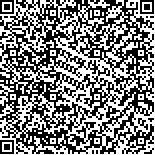| This article has been:Browse 1537Times Download 2690Times |

scan it! |
|
|
| DOI:10.13522/j.cnki.ggps.2020662 |
|
| The Effect of Nozzle Numbers on Operation of Photovoltaic Sprinkler Irrigation Systems |
|
TAN Minggao, YUN Tianping, W.0U Xianfang, MA Haochen, LIU Houlin
|
|
(1.Research Center of Fluid Machinery Engineering and Technology, Jiangsu University, Zhenjiang 212013, China;
2.Zhenjiang Fluid Engineering Equipment Technology Research Institute, Jiangsu University, Zhenjiang 212013, China;
3.School of Energy and Power Engineering, Jiangsu University, Zhenjiang 212013, China;
4.School of Mechanical Engineering, Jiangsu University, Zhenjiang 212013, China)
|
| Abstract: |
| 【Objective】Photovoltaic has been increasingly used to power irrigation systems in China, but optimizing its power output and operating load is an issue that is poorly understood. This paper aims to address this by taking sprinkler irrigation systems powered by photovoltaic as an example.【Method】The photovoltaic system used in this work was battery-free, and the experiment was conducted in a test rig in which the operation of the system under different nozzle numbers was measured and compared.【Result】①Water pressure in the nozzles varied with light intensity, and the variation decreased as the duration of light intensity increased. The saturated light intensity under two loads was 300 W/m2, lower than that under four loads. ②With the increase in the number of sprinkler nozzles, the saturated working pressure in the nozzles decreases. The saturated water pressure in the sprinklers under two nozzles was about 450 kPa, and it reduced to 435 kPa when the nozzle numbers increased to four, indicating that the illumination intensity required to reach the saturated pressure in the sprinkler system increased as the number of nozzles increased. ③With the increases in sprinkler head numbers, the falling of water droplets in the radial direction and the difference in water droplets between the sprinkler sections both decreased. Water distribution under two nozzles was approximately trapezoidal, while under four nozzles the distribution became triangle from where the nozzles were to the far ends. ④The uniformity coefficient of the sprinkler irrigation system increased as the number of nozzles increased, and the maximum uniformity coefficient under four sprinkler nozzles was 2% larger than that under two nozzles.【Conclusion】Increasing the number of nozzles can increase the saturated light intensity of the system and reduced the saturated water pressure in the nozzles. The light-height of the pumps, rotational speed and flow rate all decreased as the light intensity transient amplitude increased. The pump flow, head curve and the pipeline characteristic curve move to the right of the intersection point, and the system running at fast flow condition can reduce nozzle pressure and improve sprinkler irrigation uniformity. |
| Key words: photovoltaic; sprinkler irrigation; nozzle numbers; pump |
|
|